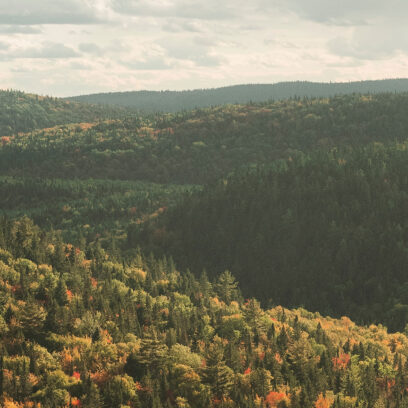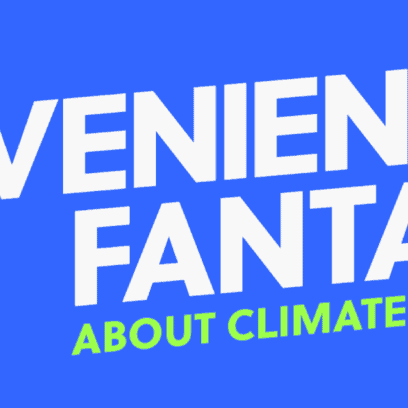Plastic Waste Challenges
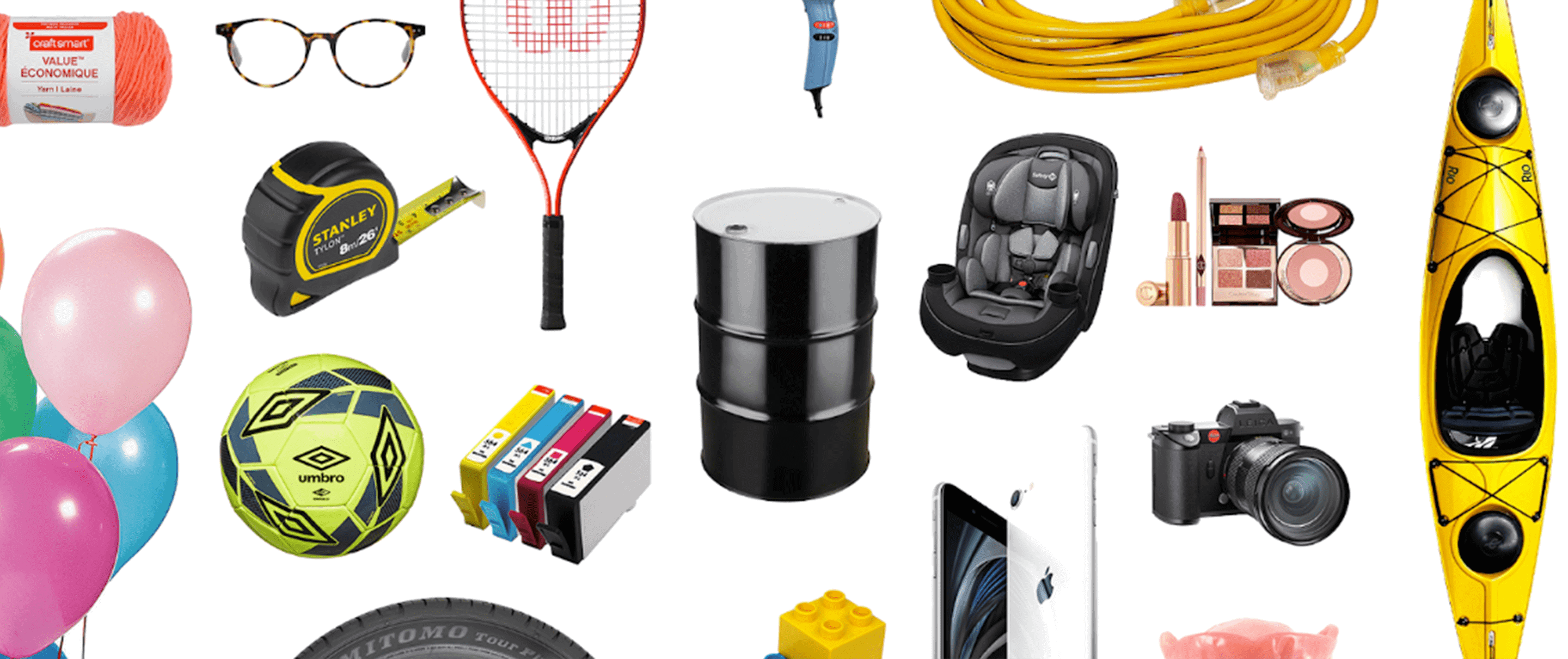

Certified Offset Portfolios
Buying high-quality carbon offsets has never been easier. Explore CBCO Portfolio 22-1 and get instant access to fully vetted carbon offsets.
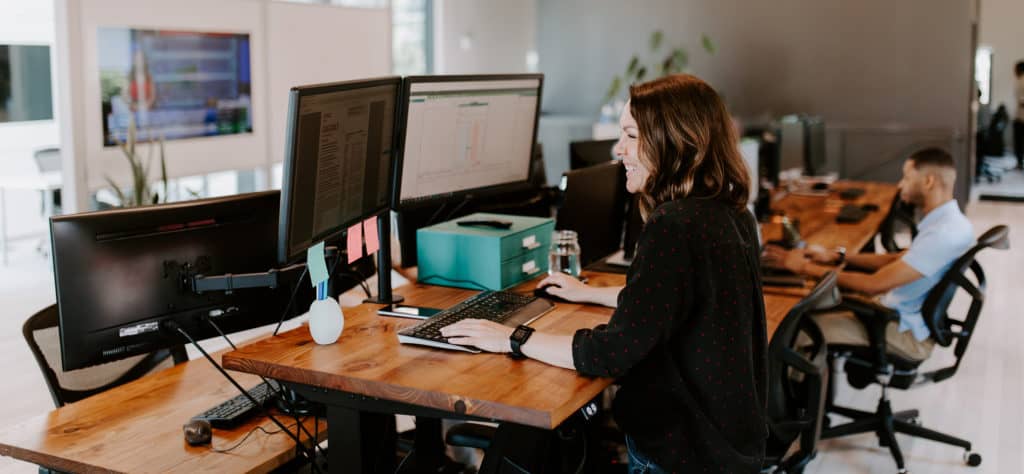
Meet the CarbonBetter team
We’re a creative and diverse team that’s helping companies navigate a net-zero future. Get to know us.
Plastic use creates a double-edged problem of reliance on fossil fuels and mountains of trash. What’s the solution?
How many pieces of plastic have you touched today? Could you even count them? Probably not! Everything from the coffee maker that makes your morning joe to the toothbrush you use at bedtime seems to be made of plastic, packaged in it, or both. Even if you are actively trying to avoid plastic items or packaging, it’s hard to escape!
You might expect to use your toothbrush for a few months and your coffeemaker for a few years, but so many plastic products are designed with the express purpose of being used once and then thrown away. There can be an upside to that, as in vital life-saving medical supplies and equipment made of plastic. But overall, single-use plastic is a huge challenge.
“…most plastic packaging is used only once, and only 14% is collected for recycling. …without fundamental redesign and innovation, about 30% of plastic packaging will never be reused or recycled.”
“PLASTICS AND THE CIRCULAR ECONOMY,” Ellen Macarthur Foundation
So where does all this plastic come from?
Except for the so-called “bio-plastics,” which are not a magic bullet solution, plastic production depends on crude oil as its basic component. The oil is refined and treated in several different steps until it is the raw material used for molding the millions of plastic items we use every day. There is also post-consumer recycled (PCR) plastic, which is plastic made from previously recycled plastic – this is preferable to virgin plastic but is often hard to come by.
Where does our plastic waste go?
Currently, we’re using twenty times more plastic than we were fifty years ago. And that amount is set to double again by 2050. (source)
The majority of the plastic we use ends up in a landfill. The EPA estimates that more than 25 million tons of plastic were landfilled in 2018 (up from 390 tons in 1960). And plastic that isn’t landfilled will end up in all kinds of places it was never intended to be. According to National Geographic, “Every year, about 8 million tons of plastic waste escapes into the oceans from coastal nations. That’s the equivalent of setting five garbage bags full of trash on every foot of coastline around the world.”
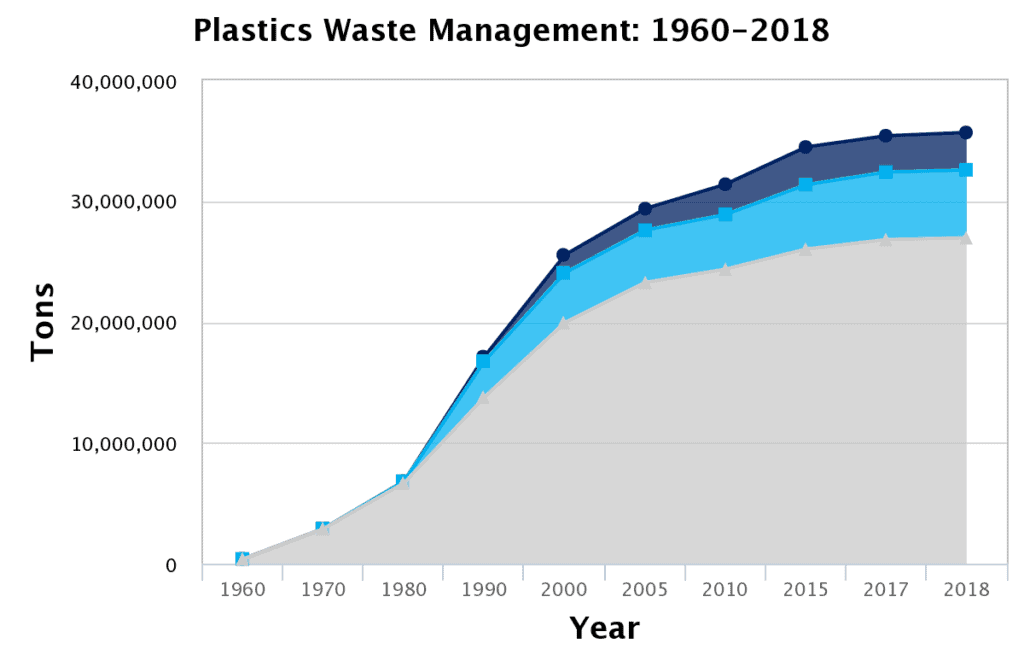

Plastic doesn’t biodegrade. But over time, (whether it is in a landfill or elsewhere) plastic does break down into tiny particles (“microplastics”) that make their way into our environment and our bodies. We may be able to cut our firsthand use of plastics, but these particles will be unavoidable for people living now and for generations to follow. It’s the new secondhand smoke.
Recycling: the solution?
Of course, we’ve all been taught that the answer to the problem of plastic in landfills and the environment is recycling. When you toss a water bottle into a recycling bin, you probably feel pretty good about it. And you naturally assume that it’s going to show up as part of another water bottle (or maybe even a t-shirt or a house) somewhere down the line. But does it? The U.S. generates so much plastic waste that rather than recycle it ourselves, we ship it to other countries.
A report by Science.org estimated that in 2016, between 0.15–0.99 million metric tons of plastic “recycled” in the United States went to countries “where it was inadequately managed.”
Another article claims that the U.S. “… is still exporting over 5,600 shipping containers (30 million kg) of plastic waste every month to countries with high waste mismanagement…without adequate environmental, health, safety and labor laws to be processed by ‘recyclers’ who provide no proof of what happens to the imported plastic waste.”
Recycling Challenges
Nothing gets recycled unless someone recycles it. For an adult population that grew up in the age of disposables, this is a big hurdle to get over. And if facilities don’t exist in your area, it will require a lot of consumer demand to get them established. For facilities to receive plastic materials and ultimately recycle them, there has to be demand for the recycled content.
And even with motivation and availability, there are still challenges. A plastic milk jug, say, with a #1 recycling symbol, is pretty straightforward. You rinse and toss and you’re good to go. But what about packaging that has to be broken down, like a paper carton with a plastic spout?
What about packaging that is technically recyclable, but consists of many layers of different materials, like plastic-coated paper cartons (Tetra Pak)? Is recycling even available in your area? Is it worth it?
And for plastic that is recycled, the quality declines each time. The lucky piece of plastic that makes it back to the recycler can only be used again two or three times before it has to be thrown away.
Post-Consumer Recycled Plastic (PCR)
To reduce reliance on fossil fuels and stem the source of plastic trash, we need to rely less on virgin plastic and explore other options for manufacturing and packaging things we need. But we also need to recycle more existing plastic.
You may have heard of PCR, or post-consumer recycled plastic. This is plastic that actually did get recycled and is used to make new products or packaging.
PCR offers the best of both worlds, in a way. All the convenience of plastic is there, but it’s also keeping plastic materials out of landfills and the environment. It saves energy used and emissions created in the manufacture of virgin plastic. “One ton of recycled plastic saves 5,774 Kwh of energy, 16.3 barrels of oil, 98 million BTUs of energy, and 30 cubic yards of landfill space.” (source)
(That’s why we chose recycling Polyethylene terephthalate (PET) into usable plastic as one of our carbon-offsetting efforts for Earth Day Austin 2022!)
PCR is made when recyclers melt down plastic and form it into the same kind of pellets as virgin plastic. Then it can be sold to manufacturers and used again. Unfortunately, virgin plastic is generally cheaper than a comparable recycled product, and higher percentages of PCR result in less control over its appearance, making it potentially less desirable. Demand for PCR packaging is increasing, though, especially in the beverage industry. This is partly due to legislation.
The Future of Plastic Waste
The manufacture and use of plastic in our everyday lives have increased exponentially since the 1950s, but recycling efforts haven’t kept pace. Dependence on plastic is dependence on fossil fuels, with the added problem of the tons and tons of trash that has to be dealt with. And sometimes, even when we think we’re recycling, our discarded plastic is still polluting the environment.
At CarbonBetter, we believe in progress, not perfection. Our plastic waste problem didn’t develop in a day, and we can’t solve it in a day. So what can be done in a day? Identifying the first step and taking it. If you’re ready for some practical help in reducing your business’s impact on the environment, contact us to find out how we can help you navigate challenging choices around plastics and packaging in your business.
